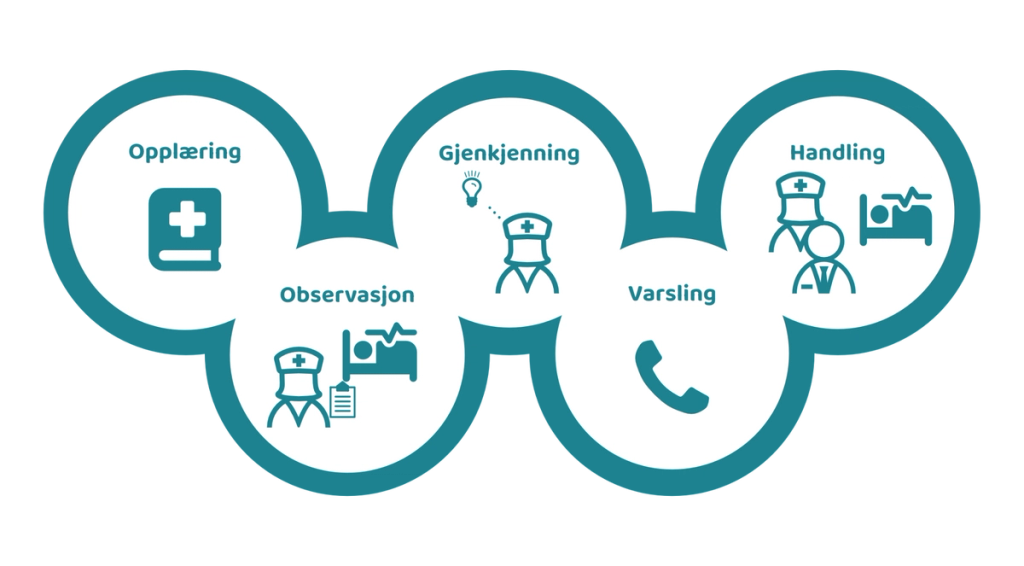Chain of prevention
The key to good patient safety is early detection of and response to worsening patient conditions. CTD Health is designed to support every step in the "Chain of Prevention" to prevent worsening somatic health conditions and critical situations.
Step 1 - Education:
The first step in the "chain of prevention" requires that healthcare personnel have sufficient basic knowledge. CTD Health therefore offers training on basic skills such as measuring pulse. While training it is possible to alter a patient's vital parameters in order to e.g., learn to tell the difference between a pulse of 45 and a pulse of 160 beats per minute.
Step 2 - Monitoring:
Having established basic knowledge, systematic registration of observations and measurement carried out will be the next step of training. In our application it is possible to train specific skills such as ABCDE or NEWS2.
Step 3 - Recognition:
Recognizing important changes in the patient's values is the key to detecting deterioration as quickly as possible. Trainees in CTD Health compare their recently measured values and NEWS2 score with habitual state and are encouraged to reflect upon the implications for the patient’s state.
Step 4 - Call for help:
When does the patient’s health condition demand calling for help? This question is essential in securing patient health. To build expertise and confidence on the subject, our application will challenge trainees regularly to address the question of whether to contact someone and if so, whom to contact.
Step 5 - Action
Good collaboration and correct team communication is important to secure proper treatment of the patient. The training focuses on ISBAR as a framework for communication between health workers so that necessary information can be passed on correctly and efficiently, and correct treatment can be implemented.
